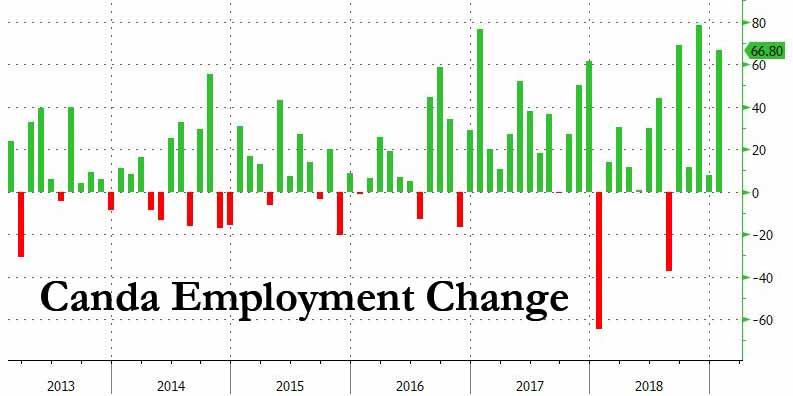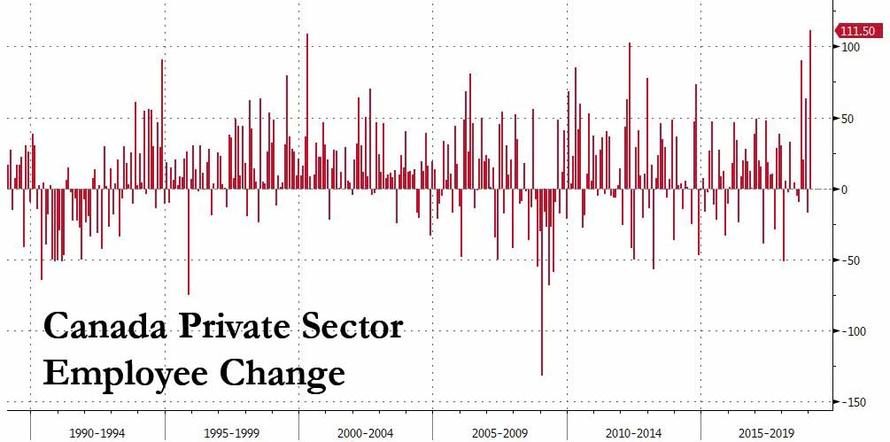Canadian Jobs Soar Following Record Private-Sector Hiring Spree
With the rest of the world rapidly slumping into recession, moments ago Canada stunned economists who were bracing for the worst when it published a barnburner of a jobs report, according to which the economy added 66.8K jobs in January, up from just 7.8K jobs in December, and orders of magnitude higher than the 5K consensus estimate. Total employment rose 327K from a year earlier.

The January surge was driven by a 99,200 increase in service jobs, which offset a 32,300 drop in goods-producing employment, with the net gains were almost evenly split between full-time and part-time positions:
- Full-time employment rose 30.9K in Jan., change in Dec. -19.3K
- Part-time employment rose 36K in Jan., last month change 27.1K
Total hours worked rose 1.2% in January from a year earlier, and also up from 0.9% in December.
The participation rate was 65.6% in Jan., up from 65.4% in prior month.
Underlying the sharp jump was a burst in hiring among young workers as well as record private-sector hiring. The number of people employed by the private sector jumped by 111,500, the biggest one-month gain on record in data going back to 1976, following a 17K drop in December.

It wasn't just the private sector that went on a record hiring spree: public sector employment also rose 15.9K in Jan, following a -14.5K drop in December. At the same time, the number of self-employed fell by 60,700.
As Bloomberg notes, the picture was much stronger than anyone expected "in an economy hit by stresses in the oil sector, weakening housing markets, volatility in global financial markets and waning consumer confidence." The report could also ease some concerns about the extent of the current soft patch and oil sector weakness.
Yet even with the scorching job gains, Canada’s jobless rate jumped to 5.8% from 5.6% in December, with the reason for the increase same as that in the US: there were more people looking for work, a sign indicating that the jobs market is pulling new workers into the labor force. That could give the economy more room to run without fueling wage pressures, i.e. a "goldilocks" environment.
The labor force increased by 103,700, the biggest one-month increase since 2009. The increase was led by a 60,500 increase in the number of youth joining the jobs market. Youth - people aged 15 to 24 - also led the employment gains, with a 52,800 increase.
Geographically, Ontario led the job surge among provinces, with an employment gain of 41,400. Meanwhile, Alberta, which is struggling with slumping oil prices and production curbs in the sector, posted a second straight monthly decline in employment.
There were some other disappointments among the numbers: also like in the US, wage growth remained depressed, with average hourly wages up 2% from a year ago, as pay for permanent employees rose 1.8%. There were also broad-based losses among goods-producing sectors, including manufacturing.



